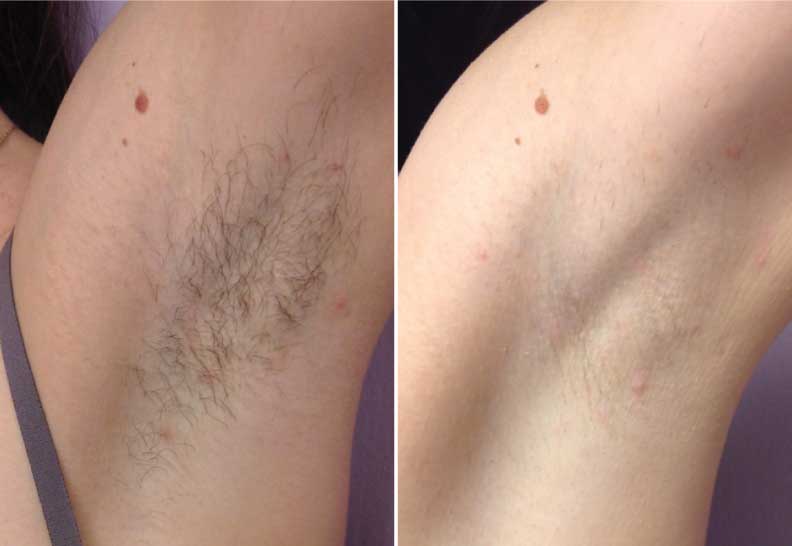Laser therapy targets hair follicles for the purpose of selectively destroying them while leaving the surrounding tissue (skin) intact. The purpose of this procedure is to diminish or remove unwanted hair.
Facts about Light Therapy
- Hair reduction requires more than one treatment and does not remove all hair. Generally, hair reduction is decreased in the amount of hair growth by 60-90% on average. Results depend on the color and location of hair follicles. A general range of 4-12 treatments spaced 4-8 weeks apart is possible for maximum results.
- Light from a laser can be harmful to the eyes and wearing special safety eyewear is necessary at all times during the procedure.
- Light from ALEX/YAG is an intense burst of light and even though the special safety eyewear is in place, you will sense light emanating from the treatment area.
- The sensation of light may be uncomfortable in certain areas and feel like pin pricks or busts of heat. The use of topical anesthetics is at the discretion of the practitioner as there are known severe allergic reactions to ingredients in topical anesthetics.
Common Side Effects and Risks
- Erythema (redness) may occur in the area of treatment. This may last several hours. Edema (swelling) around the hair follicles is called perifollicular edema and is a sign that the hair follicle has been affected. Urticaria (itching) or hive-like appearance is also associated with the thermal light affecting the surrounding skin. These symptoms usually subside in a few hours. A cool compress placed on the area provides comfort. The treated area should be cared for delicately for at least 12 hours. Limited activity may be advised, as well as no hot tub, steam, sauna, or shower use.
- A blister can form up to 48 hours after treatment. An antibiotic cream or ointment can be used. Other short-term effects include bruising, superficial crusting, and discomfort.
- Hyperpigmentation (browning) and hypopigmentation (lightening) have been noted. These conditions usually resolve within 2-6 months. Permanent color change is a rare risk. Vigilant care must be taken to avoid sun exposure (tanning beds included) before and after the treatments to reduce the risk of color change. Sunscreen and/or a sun block should be applied when sun exposure is necessary.
- Infection is not usual after treatment; however, herpes simplex virus infections around the mouth can occur following treatments. This applies to both individuals with a past history of the virus or individuals with no known history. Should any kind of infection occur, your clinician must be notified to prescribe appropriate medical care.
- Allergic reactions resulting from treatment are uncommon. Some persons may have a hive-like appearance in the treated area as discussed above. Some persons have localized reactions to cosmetics or topical preparations. Systemic reactions are rare.

